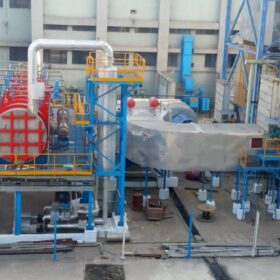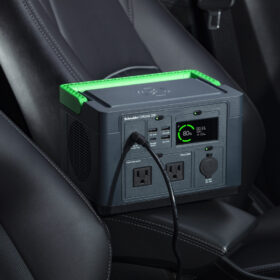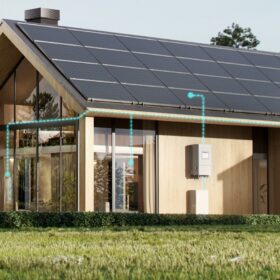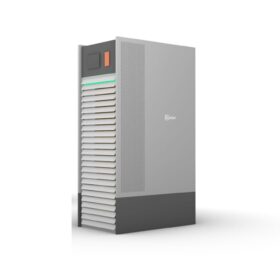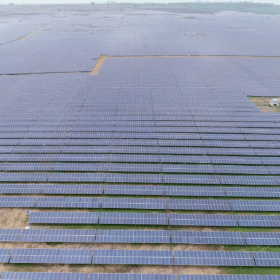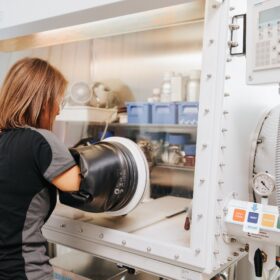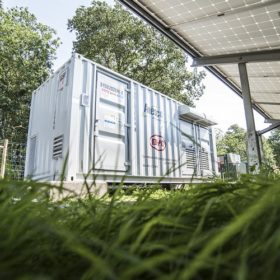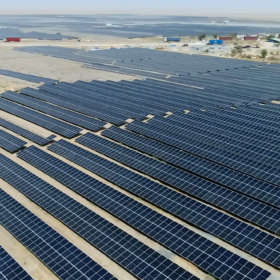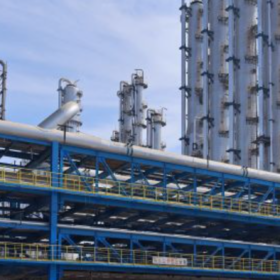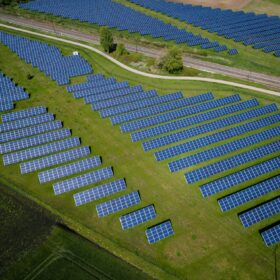India expected to hit 132 GW of installed solar capacity by March 2026
ICRA expects India to add 22 GW of new solar power generation capacity in FY 2025 and 27.5 GW in FY 2026, taking its cumulative installed PV capacity to 131.5 GW from 82 GW as of March 31, 2024.
“Solar storage will be a mainstream solution, fully integrated into energy strategies across industries”
Shantanu Mishra, head-business development, Amplus Solar, speaks to pv magazine about the C&I battery energy storage systems (BESS) market in India, key barriers and emerging models.
The Hydrogen Stream: NTPC setting up sea water to green hydrogen plant at Simhadri
NETRA, the R&D centre of NTPC, is setting up a 1 tpd seawater to green hydrogen plant at NTPC Simhadri coal-fired power plant near Visakhapatnam in Andhra Pradesh.
Schneider Electric introduces portable solar power station
The OffGrid portable power station provides power for outdoor adventures as well as in hurricane-ravaged areas.
Low-voltage energy storage inverter for residential solar
Solis S6-EH3P(8-15)K inverters for low-voltage residential energy storage integrate seamlessly with PV panels and diverse battery types, including lithium-ion and lead-acid batteries.
Italian startup offers green hydrogen generation, storage system for homes
Italian startup Hybitat Srl has developed a hydrogen production and storage system for long-term storage of surplus residential and commercial solar power. The system includes a main unit with an electrolyzer and fuel cell, as well as a storage unit with 3 kg of hydrogen capacity and 100 kWh of energy capacity.
India’s climate policies to reduce 4 billion tonnes of CO2 emissions between 2020 and 2030: CEEW Study
India’s climate policies on power, transport and residential sectors, such as scaling renewables to advancing energy efficiency and electric mobility, have already mitigated 440 million tonnes of carbon dioxide (MtCO2) between 2015 and 2020, and are on track to save 3,950 MtCO2 emissions between 2020 and 2030. However, achieving net-zero by 2070 needs bolder action.
Epsilon, Korea’s Daejoo join hands to develop graphite-rich silicon composite anode material for EV lithium batteries
Epsilon Advanced Materials and Daejoo Electronic Materials aim to jointly develop graphite-rich silicon composite anode materials for lithium-ion batteries with a capacity of 450 – 600 mAh/g, thereby increasing discharge capacity by 50% and life span by thousands of cycles.
India’s expanding battery energy storage ecosystem presents INR 3.5 trillion investment opportunity till FY 2032
An SBICAPS report says funding of the battery energy storage ecosystem in India (spanning the project as well as the upstream level) presents an INR 3.5 trillion opportunity till FY32, with an INR 800 billion medium-term investment potential provided by upcoming cell manufacturing capacities.
Rajasthan, Gujarat need policy interventions to sustain leadership in renewable energy deployment: IEEFA
A new briefing note by the Institute for Energy Economics and Financial Analysis (IEEFA) recommends lower incremental green tariffs, dedicated infrastructure funds, green budgeting, scaling up distributed renewable energy and advancing grid modernisation and energy storage to cement Gujarat and Rajasthan’s leadership in renewable energy deployment.


